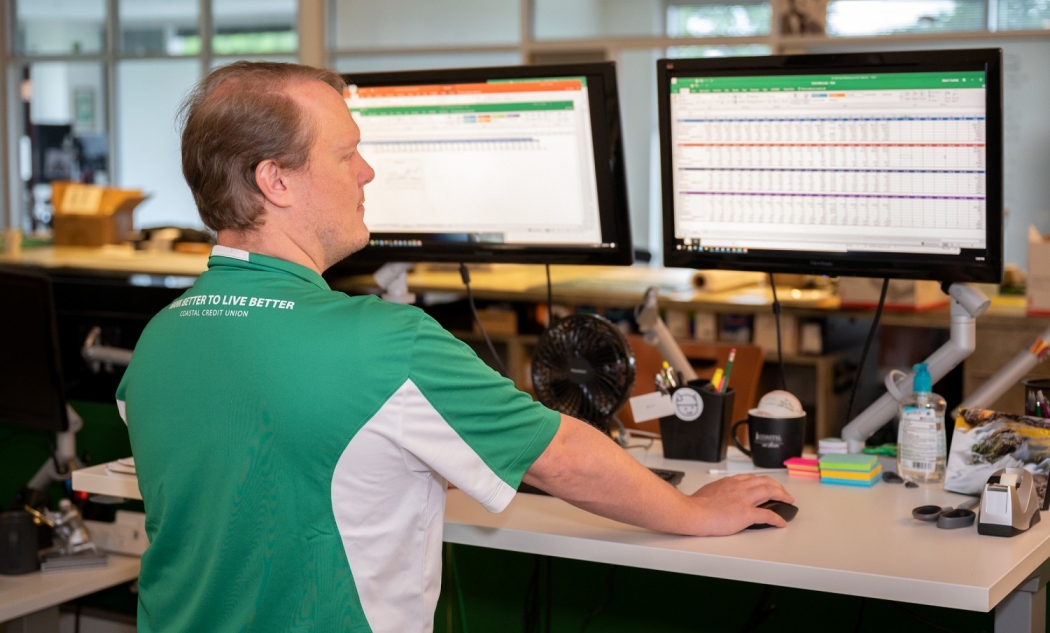Coastal Credit Union closed its lobby doors on March 20, but employees were soon back at work learning new skills to help members. Branches were closed to the public, but the dramatically shifting economy meant people had lots of questions and often greater financial needs.
“Because members couldn’t come into a branch, we were getting increased volume to our secure message center and call center” said Maria Moore, vice president of Member Call Centers. “We saw an opportunity for branch employees, because they were already used to speaking with members.”
Adam Scofield, a marketing product specialist, was one of almost 60 employees shifted to support Coastal’s Member Assistance Program, which provides members financial relief due to hardships. Staff fielded many more calls for assistance because of the pandemic.
“In the time I’ve spent with the MAP team, I’ve seen how much their hard work is helping our members. It’s nice to be a small part of that,” said Scofield.
Before the pandemic, Coastal’s call center may have had seven people responding to secure messages. Now, more than 20 employees field calls, many of them recently retrained, or “reskilled” as the company calls it.
“All the things we were being reskilled to do, from picking up phone calls, to mortgage modifications, mean so much to our members,” said Sean Patel, a relationship manager at the credit union’s Creedmoor branch. “At the end of the day, that’s what I’m here for, helping people.”
There were, of course, challenges to the process. Most of these employees already knew how to close loans and talk to members, but they weren’t familiar with the call center software and environment.
“The urgency of the situation forced us to go live, and we did so knowing there would be mistakes,” said Justin Brown, vice president of retail sales. “But we went live with built-in reporting, so we could capture those mistakes and address them immediately.”
Employees were also trained on specific tasks instead of an entire process. This helped them do that one task well. Increased training was scheduled outside normal work hours in order to keep up with demand. There were also technology challenges, with many workers logging in from home.
“Managers had to adjust quickly to the restructuring of their entire team,” said Brown.






